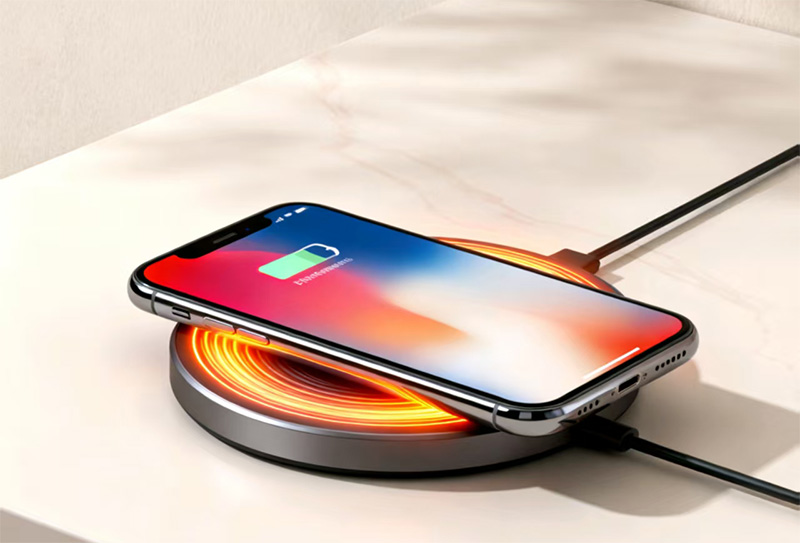In the rapidly evolving world of mobile technology, wireless charging has become a defining convenience feature for smartphones and accessories. As this technology has matured, the market has been flooded with wireless chargers across a wide range of prices—from reputable brands offering premium devices to budget-friendly options available for a fraction of the cost. This naturally raises an important question for consumers and industry professionals alike: Are cheap wireless chargers reliable and safe?
The short answer is that while some low-cost wireless chargers can perform adequately, many do not meet essential safety, efficiency, and durability standards. Understanding why requires looking deeper into the engineering, certification, and quality control differences that separate reliable chargers from risky ones.
1. The Technical Foundations of Wireless Charging
Wireless chargers operate on the principle of electromagnetic induction or, in more advanced models, magnetic resonance. An induction coil in the charging pad generates an alternating magnetic field, which induces an electric current in the receiver coil of the smartphone. This current is then converted into direct current (DC) to charge the battery.
This process may sound simple, but it involves precise control of power transfer, heat management, and electromagnetic interference (EMI). To achieve optimal efficiency and safety, components such as the power management integrated circuit (PMIC), coil alignment mechanisms, and temperature sensors must be carefully designed and calibrated. Low-cost chargers often compromise on one or more of these areas.
2. Certification Standards and What They Mean
A reliable wireless charger typically complies with standards set by recognized industry bodies such as the Wireless Power Consortium (WPC), which governs the Qi (pronounced “chee”) standard. Qi certification ensures compatibility with major smartphone brands (e.g., Apple, Samsung, Google) and verifies that the charger passes strict tests for safety, interoperability, and energy efficiency.

In contrast, many inexpensive wireless chargers—especially unbranded or generic products sold through online marketplaces—lack Qi certification. This absence doesn’t necessarily mean the charger won’t function, but it does mean that its safety, thermal performance, and electromagnetic compliance have not been verified by independent testing. Non-certified chargers may use lower-grade components, inconsistent voltage regulation, or improper shielding, all of which can pose safety hazards or shorten device lifespan.
3. Common Risks Associated with Cheap Wireless Chargers
a. Overheating and Thermal Damage
Wireless charging inherently produces heat due to energy loss during induction. High-quality chargers use temperature monitoring circuits, cooling vents, and power regulation chips to manage this. Cheap models often omit these features, resulting in excessive heat buildup. Over time, this can degrade battery health, cause smartphone throttling, or, in extreme cases, lead to melting or fire risk.

b. Voltage Instability
Stable voltage and current output are critical for both charging efficiency and safety. Inferior chargers may lack adequate voltage regulation, leading to surges or drops that can harm the smartphone’s internal charging circuitry. Fluctuating power also reduces overall charging speed and efficiency.
c. Poor Electromagnetic Shielding
Inadequate shielding can cause electromagnetic interference (EMI) with nearby electronic devices or even disrupt the phone’s wireless communication (Wi-Fi, Bluetooth, NFC). Poorly shielded chargers can also emit higher-than-recommended electromagnetic fields, posing potential regulatory compliance issues.
d. Reduced Charging Efficiency
While premium Qi-certified chargers typically achieve efficiencies around 70–80%, cheap ones may deliver as low as 40–60% efficiency. This means more energy is wasted as heat, charging takes longer, and energy consumption increases—negating one of the key benefits of wireless technology.
4. Indicators of a Safe and Reliable Charger
To distinguish a reliable wireless charger from a potentially unsafe one, consider the following factors:
Qi Certification: Look for the official Qi logo. Certified devices are listed on the WPC’s public database.
Brand Reputation: Established brands invest in quality control, third-party testing, and warranty support.
Build Quality: High-quality chargers have solid construction, smooth coil alignment, and reliable connectors.
Technical Specifications: Check for output power (e.g., 10W, 15W, 30W), over-voltage and temperature protection, and compatibility notes.
Customer Reviews and Independent Tests: Verified customer feedback and third-party reviews can reveal performance and safety issues that may not be apparent from product descriptions.
5. The Economics of Quality
It’s important to note that the cost difference between cheap and reliable wireless chargers often reflects real material and testing expenses. Components like copper coils, high-efficiency power ICs, and heat-resistant materials significantly influence cost. Moreover, obtaining Qi certification and meeting CE, FCC, and RoHS compliance standards requires both time and financial investment.
A charger sold at an extremely low price—say, under $10—often bypasses these essential steps. While it may initially appear to work, such a product might fail prematurely or damage a user’s phone over time. In contrast, mid-range and premium chargers (typically $20–$50) often balance affordability with robust design and verified safety.
6. The Future of Wireless Charging Safety
The wireless charging industry continues to advance with innovations such as multi-coil arrays, AI-based charging optimization, and adaptive power delivery. Modern systems can dynamically adjust output based on device type, ambient temperature, and coil alignment. As these technologies mature, economies of scale will likely reduce costs—making reliable, safe wireless chargers more accessible without cutting corners on quality.
Regulatory bodies are also tightening oversight. For example, the EU and US are increasingly enforcing stricter electromagnetic compatibility (EMC) and energy efficiency standards for wireless charging products, helping to weed out unsafe, uncertified units.
Conclusion
While inexpensive wireless chargers may seem appealing, their reliability and safety are often compromised by poor materials, inadequate testing, and lack of certification. They can pose real risks, from overheating and inefficiency to potential device damage. Investing in a Qi-certified charger from a reputable brand ensures not only faster and more consistent performance but also peace of mind regarding electrical and thermal safety.
In the intelligent charging industry, the guiding principle remains clear: true value lies not in the lowest price, but in the balance between safety, efficiency, and longevity. For consumers and manufacturers alike, maintaining this balance is key to building trust in the future of wireless power technology.
